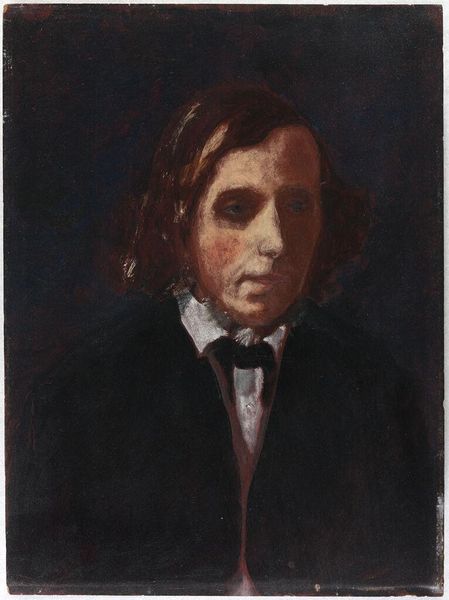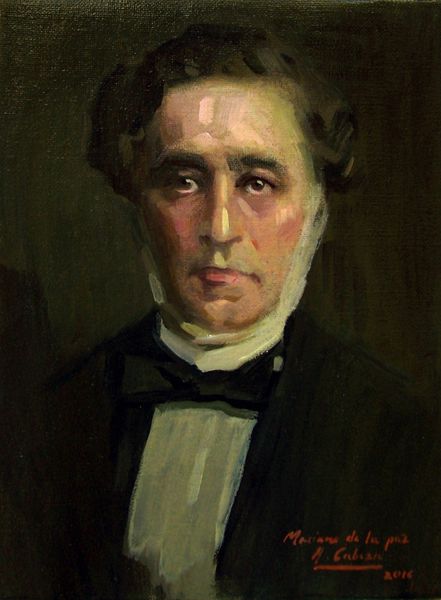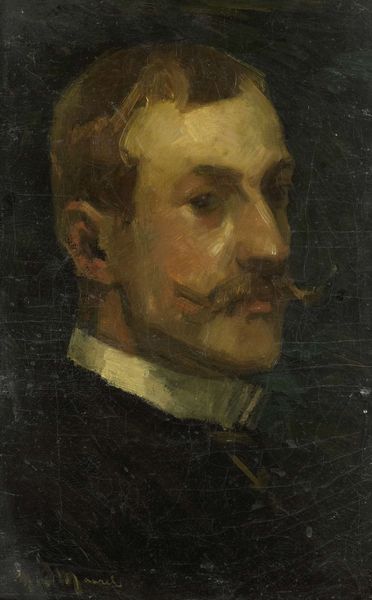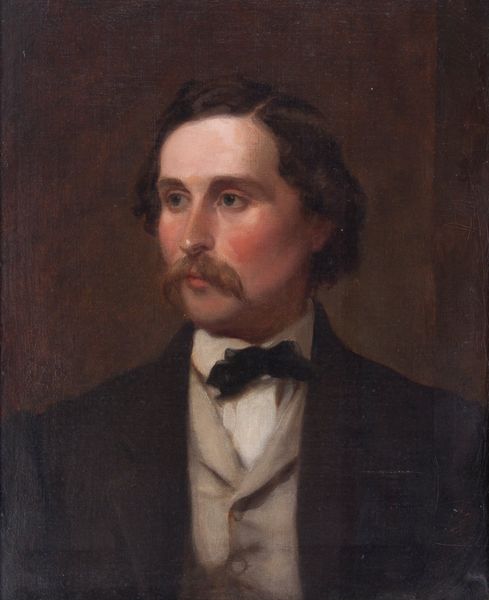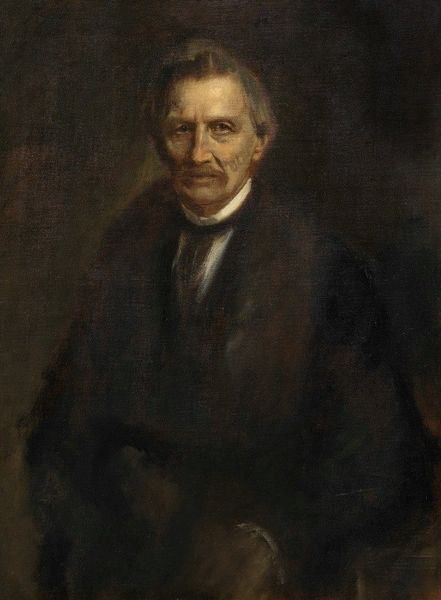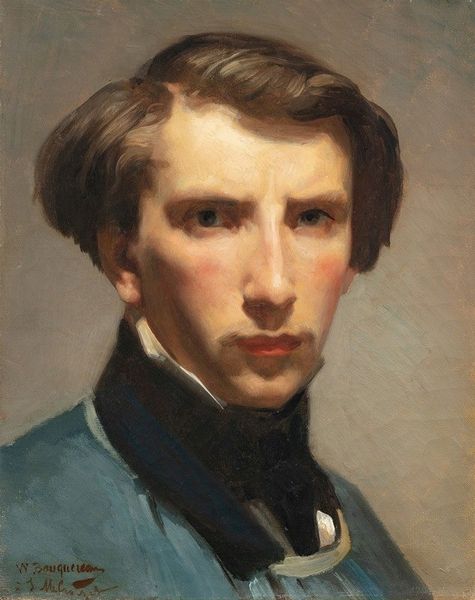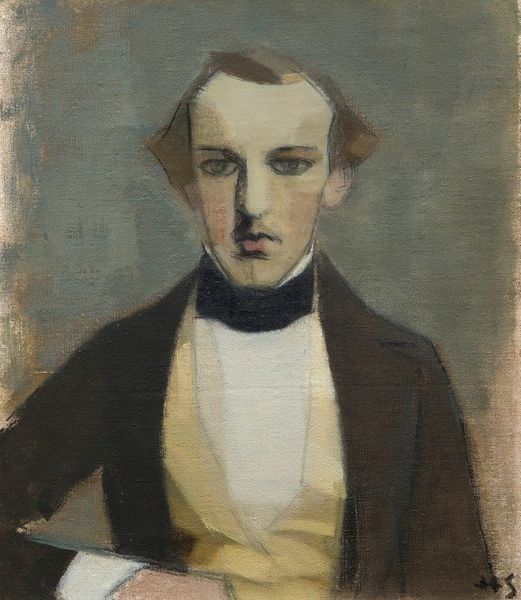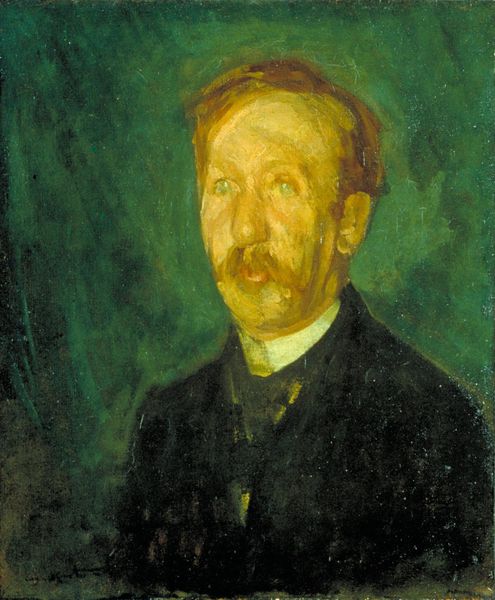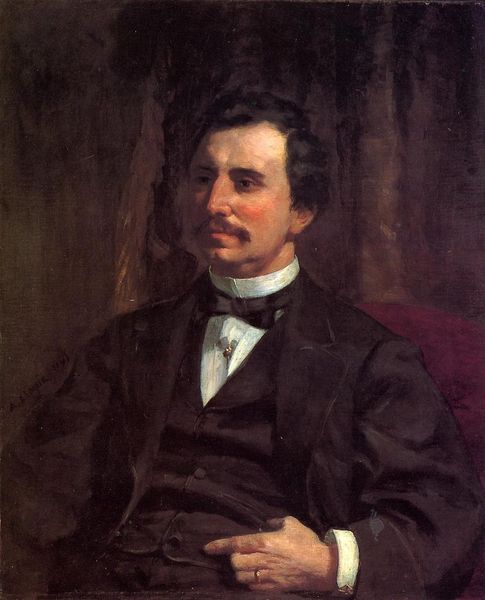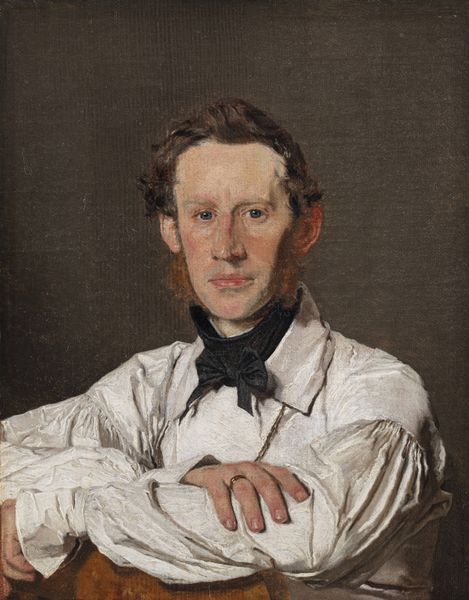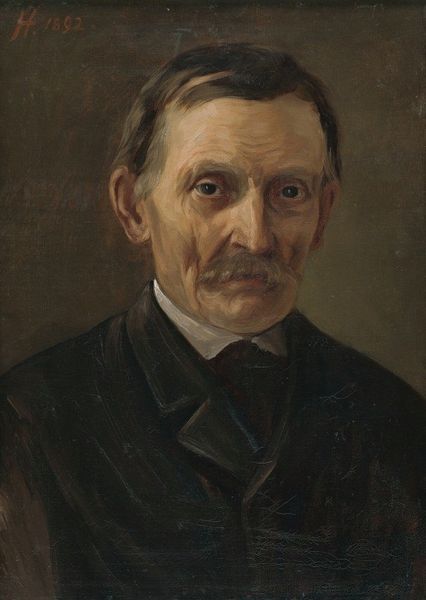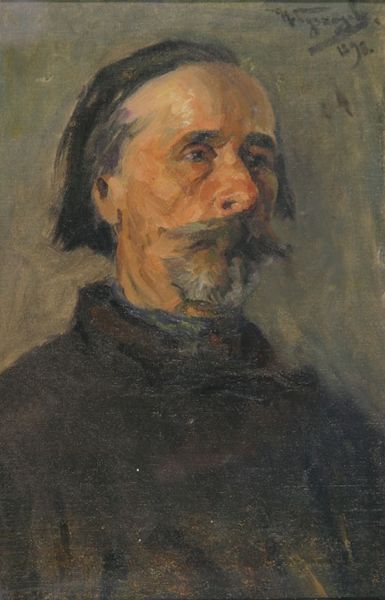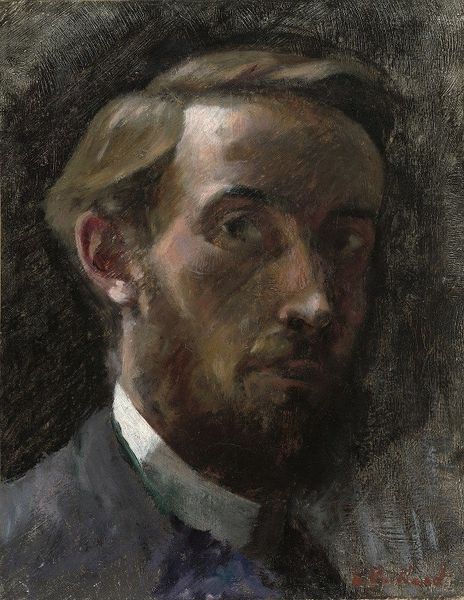
Copyright: Public Domain: Artvee
Editor: Here we have Paul Cézanne's "Head of a Man," painted around 1865. It's an oil painting, and it strikes me as…intense. Almost brooding. What do you see in this piece, considering the period in which it was created? Curator: The intensity you perceive is interesting, particularly when we consider the conventions of portraiture at the time. Beyond the surface, I see a challenge to those conventions. This wasn’t simply about capturing likeness; Cézanne’s thick, visible brushstrokes were quite radical. Think about the rise of industrialization then, and how artists were responding. Was Cézanne rejecting the slickness and perfection valued by the academy, aligning himself with a rawer, more 'authentic' vision of humanity? Editor: That’s fascinating. So, his technique wasn't just a stylistic choice but potentially a social statement? The 'rawness' almost feels like a commentary on the changing times. Curator: Exactly. It pushes us to ask: Who had the power to be represented in art, and how? The sitter's identity also becomes a relevant question: is he a member of the bourgeoisie or the working class? How does Cézanne depict masculinity? Considering the politics of representation during that time helps unpack this seemingly simple portrait. Editor: So by analyzing not just *what* is shown but *how* it's shown, we can understand Cézanne's potential commentary on social power dynamics? Curator: Precisely. This work serves as an interesting example of how artistic choices often serve as statements that can be reflective of a wider political context, urging the spectator to challenge power structures in place. Editor: Wow, I will never see portraiture in the same way. Curator: I am so happy to have helped in opening this work for you.
Comments
No comments
Be the first to comment and join the conversation on the ultimate creative platform.
